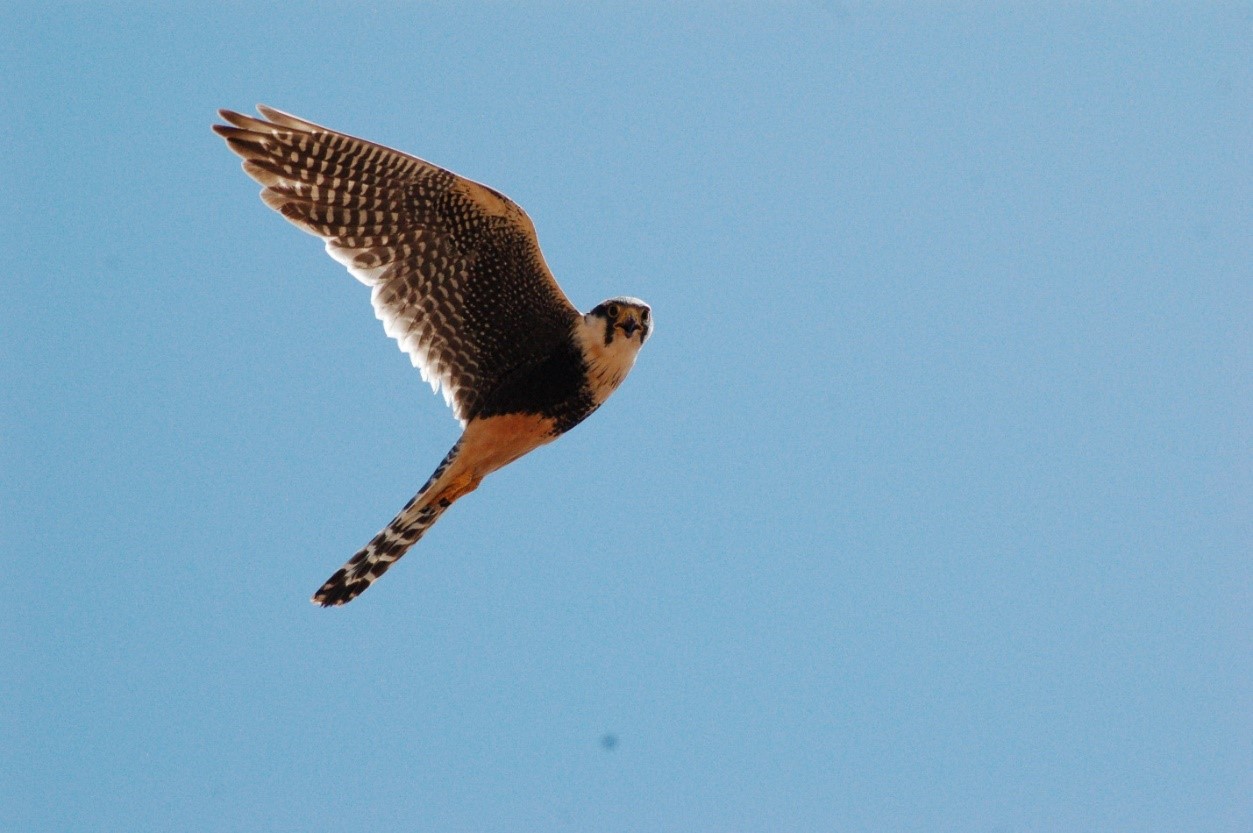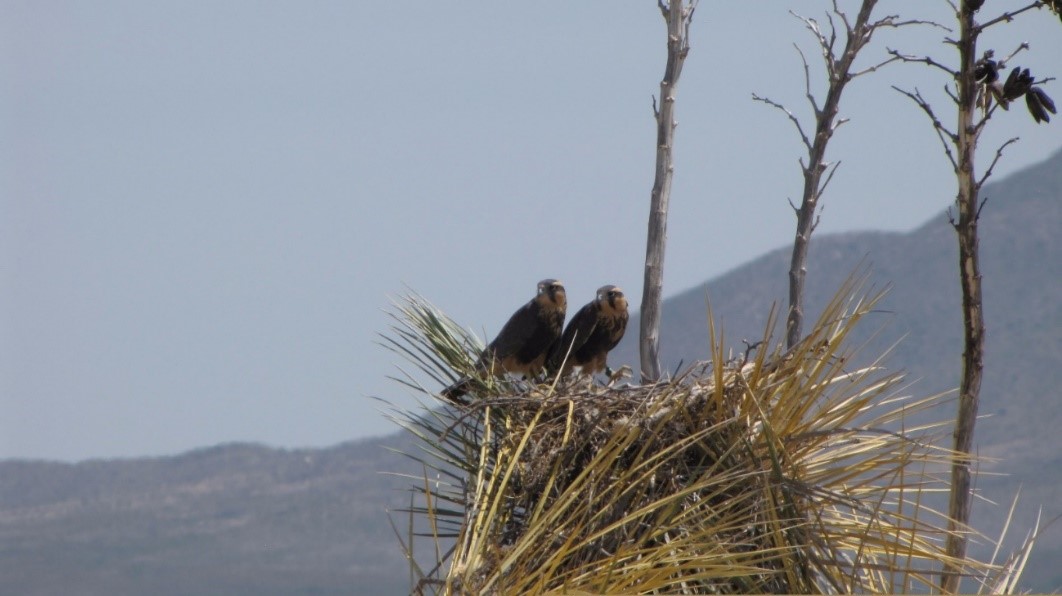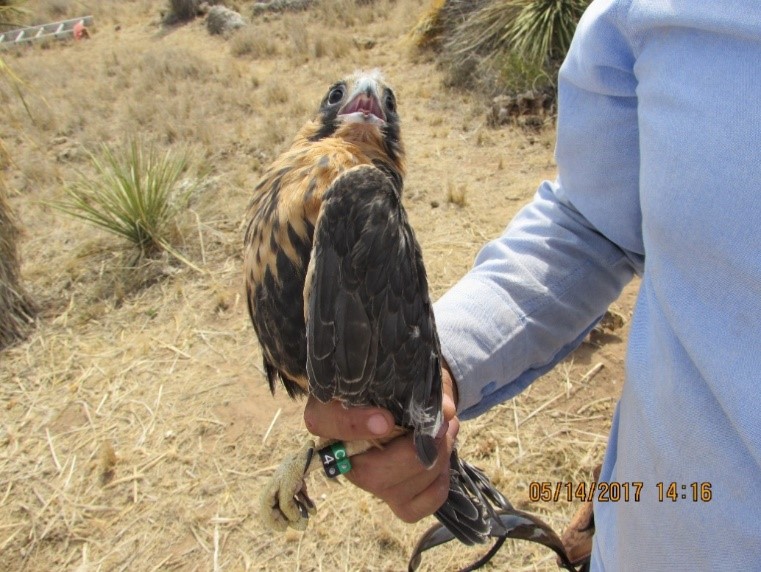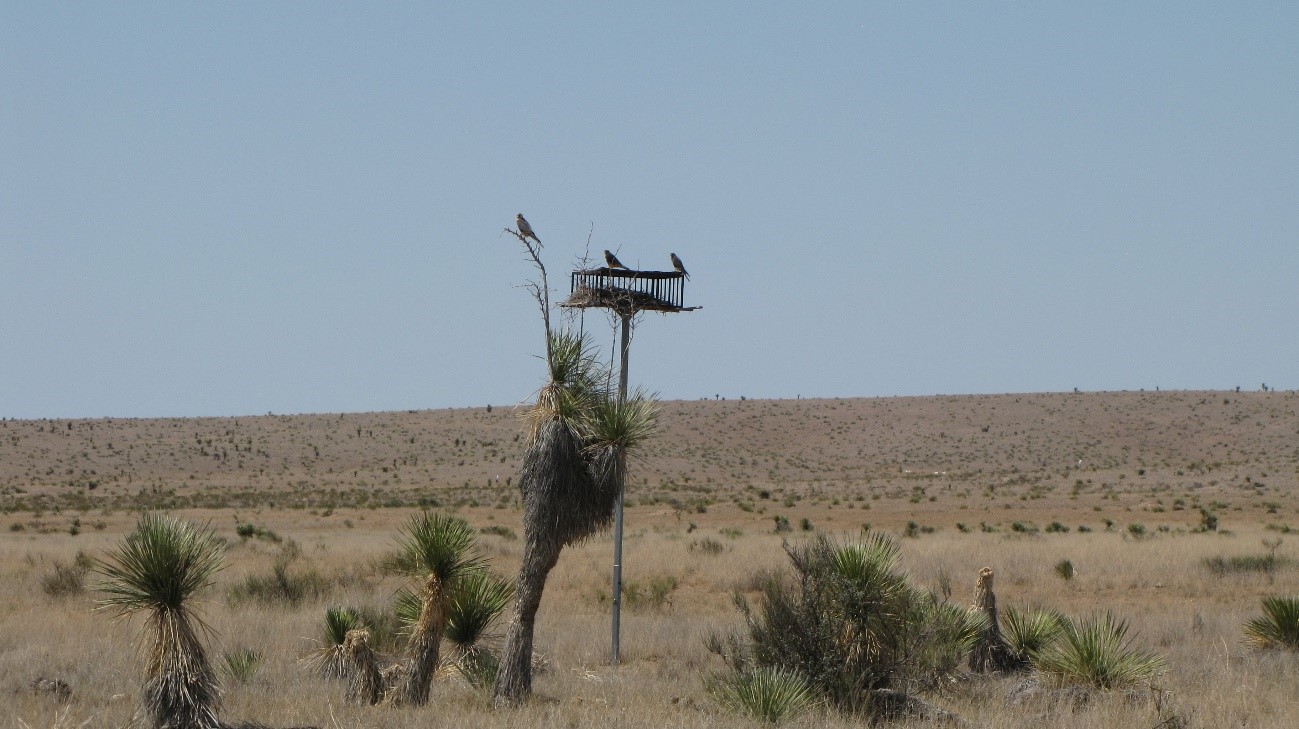
Chihuahua’s Aplomado Falcons slowly making a comeback
The Aplomado Falcon (Falco femoralis) is a medium-sized falcon of the Americas that was once common in the grasslands of the Chihuahuan Desert of the US, historically distributed in west Texas, southern New Mexico and southeastern Arizona. Their populations began to decline around 1930 (Keddy-Hector 2000) and the last documented pair was recorded nesting near Deming, New Mexico, in 1952 (Ligon 1961). The species is listed as endangered in the US and threatened in Mexico according to Mexican Law NOM-059-SEMARNAT-2010 (SEMARNAT 2010), and on the Global IUCN Red List for threatened species.

In 1992, a previously unknown isolated population of Aplomado Falcons was discovered in the desert grasslands of the north-central state of Chihuahua (Montoya et al., 1997, Montoya 1995). Since then, there has been research on the reproductive biology, habitat and prey of this Aplomado Falcon population (Macías-Duarte 2002, Montoya et al 1997, Macías-Duarte et al 2009, Macías-Duarte et al 2004, Mendez -Gonzalez 2000; Macias-Duarte et al., 2016). This population of the Aplomado Falcon in Chihuahua is of special conservation interest because of its susceptibility to extinction due to very restricted distribution in the north-central part of Chihuahua.
At the time of discovery, it was expected that this desert population, with adequate protection and management, would potentially colonize the former breeding range in northern Mexico and the United States. In 2017, researchers found that 17 of 35 historic nesting territories were converted to agricultural croplands, a red flag for the survival and persistence of the species. The continuous destruction of the scarce high quality habitat for the Falcon Aplomado meant the likely disappearance of the species in the Chihuahuan Desert.

Aplomado Falcon nest and fledglings in Yucca elata, the species’ preferred nesting habitat.
There were eight pairs of Aplomado Falcons monitored, of which seven had active nests. Of these seven pairs, five produced 15 successful fledglings. Twelve of the fledglings were banded and affixed with transmitters.

Female Aplomado Falcon chick at least 32 days old with color bands
![]()
A population increase to seven breeding pairs was observed at the end of the monitoring period. Bird Conservancy, IMC Vida Silvestre and partner ranches plan to continue with the monitoring program and continue to place artificial nesting structures, because when used, they provide a good opportunity for the chicks to survive to fledgling.

Artificial nest platforms replace the yucca they prefer to nest in that are lost to cattle and land conversion.
Bird Conservancy and IMC Vida Silvestre, along with several other partners, are currently working with landowners in the area on more than 250,000 acres to improve rangeland health and restore grassland habitat, creating a win-win for people and wildlife, including the Aplomado falcon, and discourage the rapid land-use change.
Citations
Keddy-Hector, D. (2000). Aplomado Falcon. In The Birds of North America Online (Poole, A., Poole, A.)Poole, A.s). Cornell Lab of Ornithology; Retrieved from the Birds of North America Online: http://bna.birds.cornell.edu.bnaproxy.birds.cornell.edu/bna/species/549, Ithaca, N. Y.
Ligon, J. S. (1961). New Mexico birds and where to find them. University of New Mexico Press, Albuquerque, New Mexico
Macías-Duarte, A. 2002. Éxito Reproductivo, Presas Potenciales y Hábitat del Halcón Aplomado Falco femoralis septentrionalis Todd en Chihuahua, México. Master’s thesis, Universidad Autónoma de Chihuahua, Chihuahua, Chihuahua, México.
Macías-Duarte, A., A. B. Montoya, W. G. Hunt, A. Lafon-Terrazas, and R. Tafanelli (2004). Reproduction, prey, and habitat of the Aplomado Falcon (Falco femoralis) in desert grasslands of Chihuahua, Mexico. Auk 121:1081-1093.
Macías-Duarte, A., A. B. Montoya, C. E. Méndez-González, J. R. Rodríguez-Salazar, W. G. Hunt, and P. G. Krannitz (2009). Factors influencing habitat use by migratory grassland birds in the state of Chihuahua, Mexico. The Auk 126:896-905.
Macías-Duarte, A., A. B. Montoya, J. R. Rodriguez-Salazar, A. O. Panjabi, P. A. Calderón-Domínguez, and W. G. Hunt (2016). The imminent disappearance of the Aplomado Falcon from the Chihuahuan Desert. Journal of Raptor Research 50:211-216.



